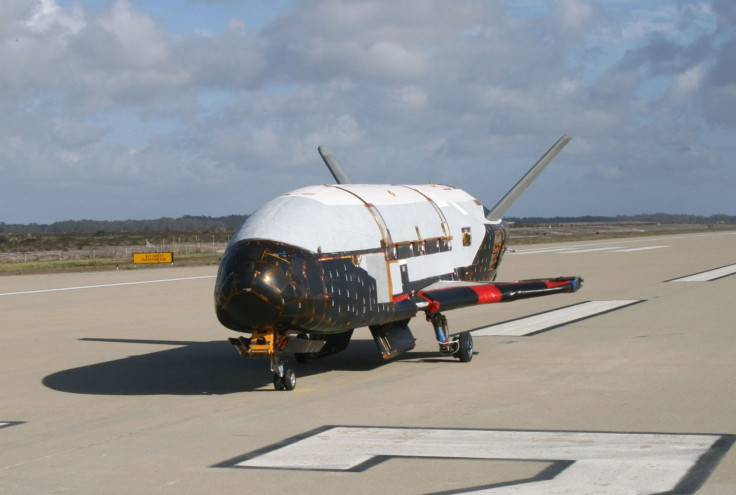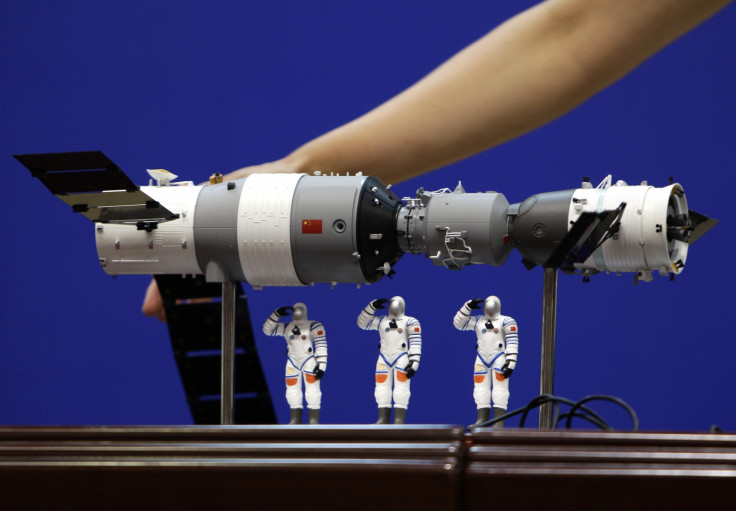Space race revealed: US and China test futuristic EmDrive on Tiangong-2 and mysterious X-37B plane
US and Chinese governments are already testing out their own EmDrive devices on spacecraft, sources say.
The US Air Force and the Chinese government are presently trialling the controversial EmDrive space propulsion technology on spacecraft, according to sources in the international space industry.
IBTimes UK has been informed that the US Air Force is currently testing out a version of the EmDrive electromagnetic microwave thruster on the X-37B unmanned military space plane, while the Chinese government has made sure to include the EmDrive on its orbital space laboratory Tiangong-2.
The Boeing X-37 is a mysterious autonomous orbital test vehicle that is launched into low-Earth orbit using a launch vehicle just like a regular space rocket, but when it comes back to Earth, it re-enters the Earth's atmosphere in one piece and lands as a spaceplane.
The X-37B has been circling the Earth on a top-secret mission ever since it was launched by the US Air Force on 20 May 2015, and no one knows what exactly it is monitoring or when it will return.
All we know is that the current robotic spacecraft in orbit – the OTV-4 – is solar-powered and carries a large experiment bay taking up about a third of the space plane. This is where the US Air Force installs sensors and experimental technologies it wants to test out. If the US Air Force is testing out the EmDrive, this would make sense as the US military maintains that the X-37B is being used to "explore reusable space vehicle technologies in support of long-term objectives".
China and the US both have a vested interest in the EmDrive

The EmDrive is the invention of British scientist Roger Shawyer, who proposed in 1999 that based on the theory of special relativity, electricity converted into microwaves and fired within a truncated cone-shaped closed metal cavity causes the microwave particles to exert more force on the flat surface at the large end of the cone (i.e. there is less combined particle momentum at the narrow end due to a reduction in group particle velocity), thereby generating thrust.
His critics say that according to the law of conservation of momentum, his theory cannot work as in order for a thruster to gain momentum in one direction, a propellant must be expelled in the opposite direction, and the EmDrive is a closed system.
However, Shawyer claims that following fundamental physics involving the theory of special relativity, the EmDrive does in fact preserve the law of conservation of momentum and energy.
As for the Tiangong-2, it is a space laboratory that China launched into space on 15 September aboard a Long March 2F rocket. It is not designed to be a permanent orbital station, but is instead a testbed for key technologies that China wants to use on its large modular space station, which is set to launch in 2023.
The Tiangong-2 is big enough for two astronauts to carry out experiments in it and carries 30 days of life support resources aboard it. The space laboratory measures 10.4m in length and has a diameter of 4.2m. On 18 October, the Shenzhou 11 manned spaceflight carrying Commander Jing Haipeng and Chen Dong docked with the Tiangong-2 on 18 October at an altitude of 393km. Jing and Chen will spend 30 days in space conducting various experiments using the Tiangong-2
Scientists from the Northwestern Polytechnical University (NWPU) in Xi'an, China were one of the first in the world to try to build their own version of the EmDrive in 2008, and between 2012 and 2014 they published a series of papers reporting that they had measured net thrust.
However in 2014, they found that the thrust measured was a false positive experimental error due to a power cable, and when they revised the study with an improved EmDrive prototype, they found that any possible thrust being emitted by the device was far too small for their laboratory setup to measure.
If this is true, the space race is about to get interesting

Nevertheless, this does not mean that the Chinese have lost interest in EmDrive technology – and it would make sense for the microwave thruster to be included as one of the new technologies that need to be verified.
After all, in October EmDrive inventor Roger Shawyer confirmed that the UK Ministry of Defence and the US Department of Defense are interested in using the EmDrive to power space satellites, because a propellant-less rocket engine would enable the military to get close to a target without anyone knowing it was there.
In the meantime Roger Shawyer is patenting a new EmDrive thruster that features a single flat superconducting plate on one end, while the other end is a unique shaped plate that is non-superconducting.
He plans to manufacture thousands of the devices as part of his joint venture with UK aerospace firm Gilo Industries Group, and hopes that the EmDrive can be used to reduce the cost and time to space, as well as powering flying cars and helping to solve the global energy crisis.
© Copyright IBTimes 2025. All rights reserved.






















